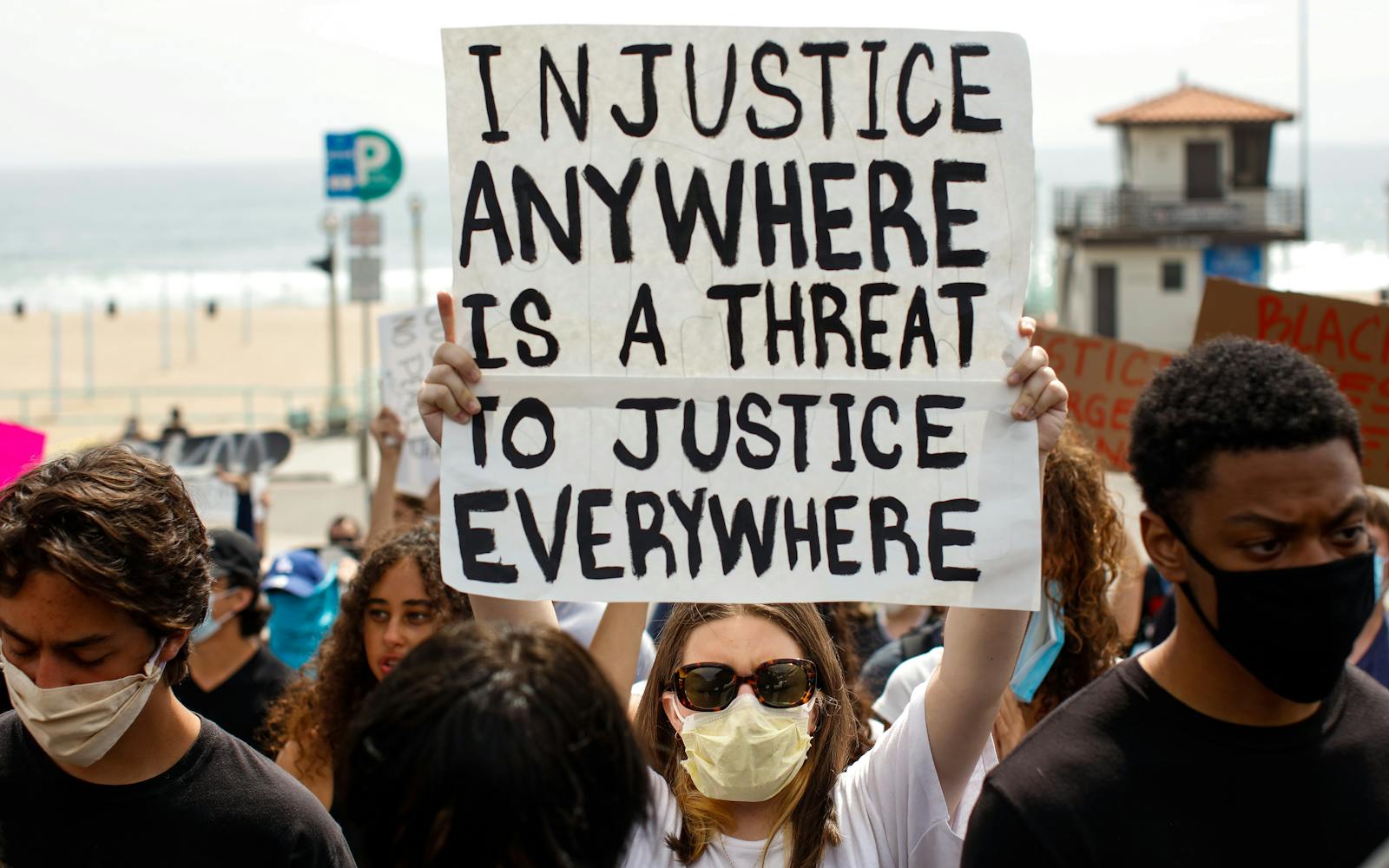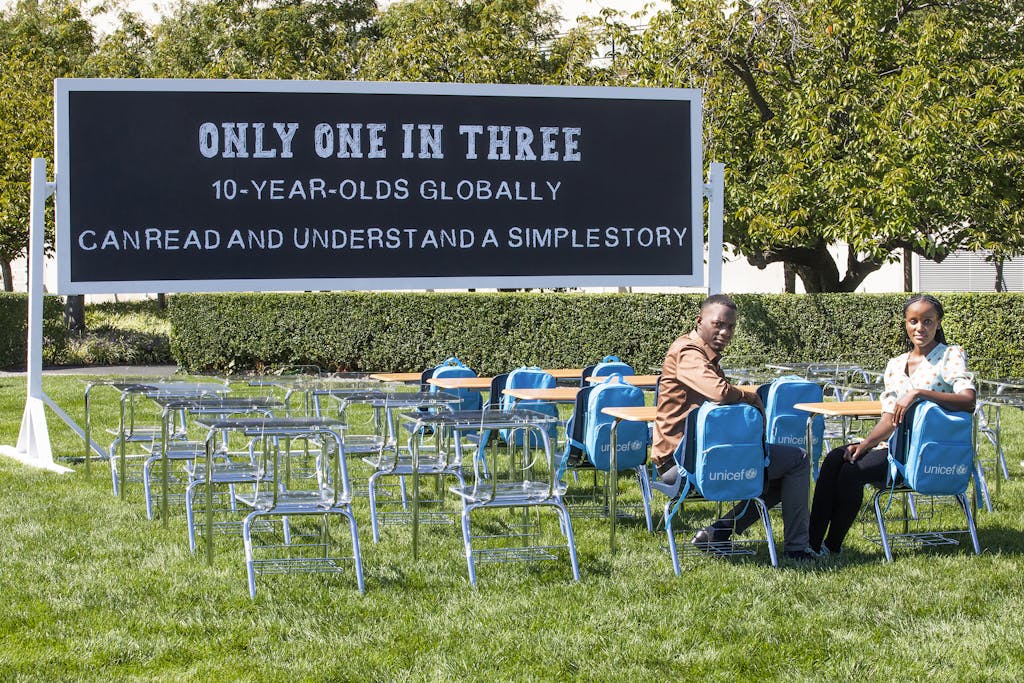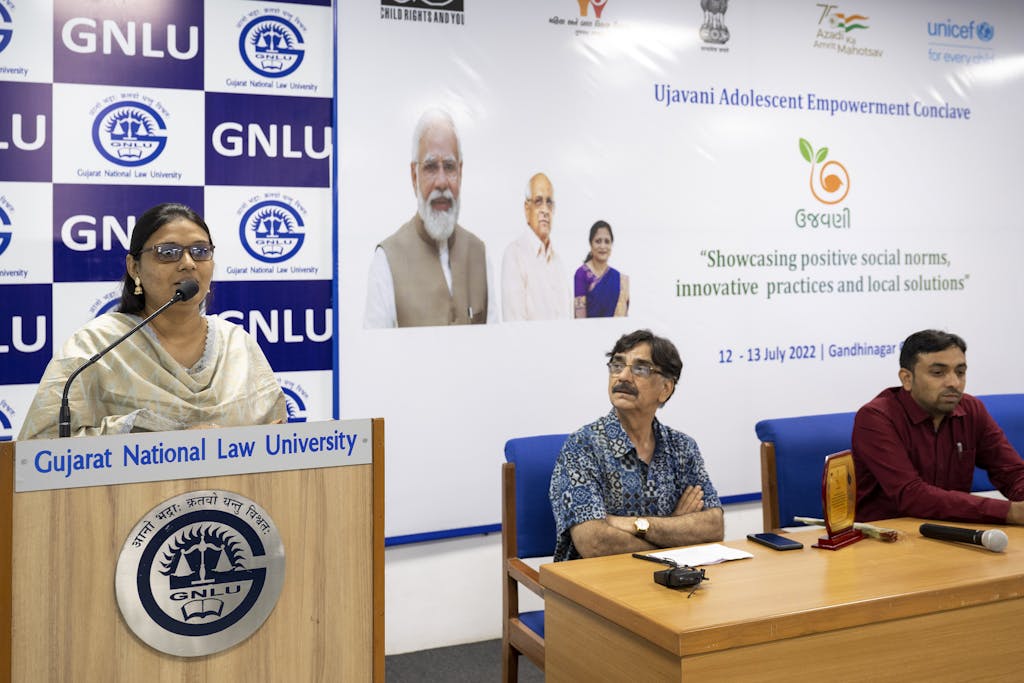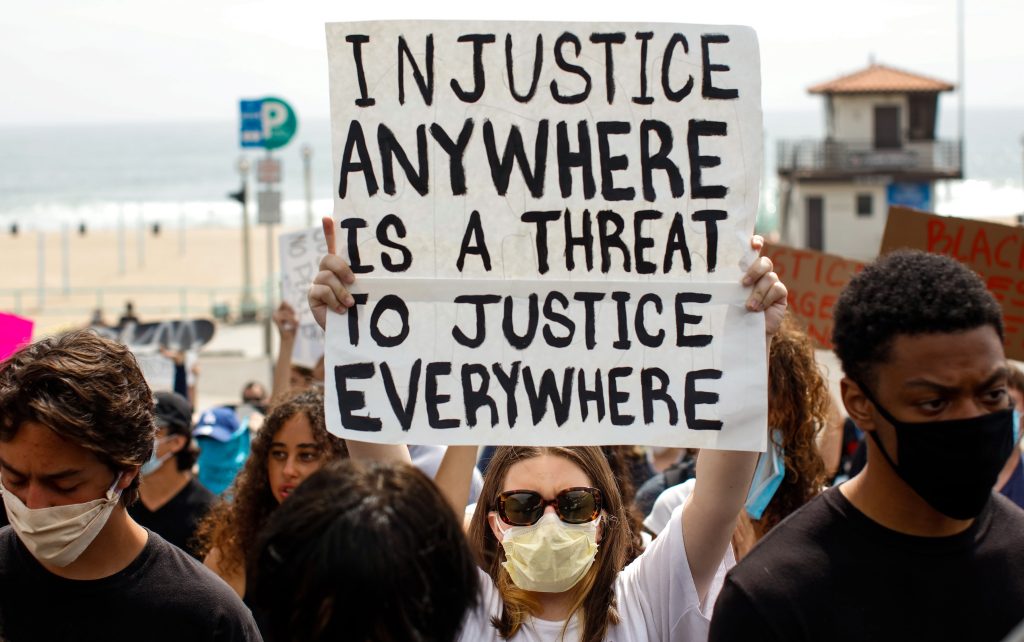

A youthful woman holds up an indication with the phrases, “Injustice anyplace Is a menace to Justice in each place” at a gathering to protest the dying of George Floyd and in assist of Black Lives Matter in Manhattan seaside, CA in 2020. picture: Jay L. Clendenin / la instances by way of Getty pictures
in case you look carefully, you’ll see an “navy of doers” rising throughout the globe. The movement promotes a mannequin new imaginative and prescient — one we have now to understand — that places people on the center of justice to make sure that that the prolonged time period is fairer and extra resilient for everyone. a mannequin new paper, “From Justice for the Few, to Justice for All,” explains what the movement in direction of people-centered justice might educate the world as a outcome of it races in direction of the deadline for reaching the Sustainable enchancment targets. Two of the co-authors sat down with Dynahlee Padilla-Vasquez for a dialog.
Thanks for taking time to share your views on the paper, each of that are so distinctive. Kelechi, you’re an legal professional residing in Nigeria, and Maaike, you’re a thought chief on people-centered justice from the Netherlands, residing in ny. What does people-centered justice imply to every of you?
Kelechi Achinonu | Nigerian lawyer, UN basis subsequent expertise Fellow for Justice: people-centered justice is consumer-nice justice. It’s constructing institutions, frameworks, insurance coverage policies that people can truly join with. so as that anyone — a market woman in Nigeria or The Gambia, the policewoman, whoever it is — can principally understand what you’re fixing these justice factors for. It doesn’t work if people can’t use it, people can’t entry it, and fully different people can’t comprehend it.
Maaike de Langen | Thought chief, Leads the obligation group of the Justice movement Coalition: people-centered justice requires us to take an honest have a look at what justice methods are, how they actually work, and the means we’re ready to enhance them. Do justice actors and institutions truly assist remedy the factors that people face? Giving people selections and empowering them to resolve their justice factors will enhance their resilience and reduces their vulnerability. enhancing this means to resolve and cease justice factors can finally have a systemic influence.
Why are you choosing to jot down about people-centered justice now?
Kelechi: proper now, “justice” is a buzzword that everyone likes to make the most of however not a quantity of people are taking the time to do. By people, I imply nations, [government] ministers, people in vitality, these which have the performance to do the issues that ought to be achieved for people. so as that’s why i assume that it is a great time to draw everyone’s consideration to that: “‘Hey, we’re talking about this, however what precisely are we doing?’”
Maaike: people-centered justice is a shift away from talking solely with regard to the institutions and the means we prepare extra judges and the means we construct extra courts. more and more nations and organizations are placing people on the center of justice, which i assume is good progress. to make sure that that you merely responsive institutions and an environment nice justice system, you’ll like to understand — and understand — people in all their range. So, this paper might even be meant to mark the pivot that is taking place in lots of nations and on the worldwide diploma. We take inventory of how far we have now come over the previous years: we have now a rising movement, a navy of doers that is more and more related and a sensible agenda to enhance justice. We then look forward: What will we have now to do and the place will we have now to go to actually obtain this?

Ugandan local climate activist Vanessa Nakate and youth local climate activist Davis Reuben Sekamwa go to the ‘studying disaster Classroom’ set up at United Nations Headquarters in ny. The ‘studying disaster Classroom’ represents the measurement of youngsters failing to be taught essential foundational expertise. picture: Chris Farber/UNICEF by way of Getty pictures
The Sustainable enchancment targets are constructed on the premise of leaving nobody behind. as a outcome of the world lags behind on targets to understand justice for all, who’s being left behind primarily the most?
Kelechi: The people. The people have been left behind. If it’s justice for all people — ship the justice. you already know that talking about justice is candy for paparazzi and conversations, however then I take into consideration the exact confirmed actuality that we’re nonetheless having this dialog means one factor is unsuitable. The poor, the marginalized, the weak, communities ought to really feel that they’re getting justice of their nations proper now — they should really feel like they will confidently notion the system.
I additionally assume that it’s about involving youthful people, proper? I really feel like at my age no matter selections are being made proper now are going to both make [or break] my future. The Pathfinders for Justice fellowship as an illustration, entails youthful people talking about justice factors, advocating for justice factors. It’s one factor I’ve seen work as a outcome of as we’re rising in our communities, we’re nearer to the people which might even be going by means of factors. we’re additionally going by means of these factors. So having us involved in figuring out factors and framing options has labored and is working properly now.
Maaike: It’s truly the overwhelming majority of these that discover themselves being left behind. we have now estimated the worldwide justice hole at 5.1 billion people, which is 2-thirds of the world inhabitants who do not want significant entry to justice. All these people are unable to face up for his or her rights, resolve disputes peacefully, or entry public companies that they’re entitled to. In any context, the nondominant teams have the hardest time accessing justice. it will probably be ladies, youngsters, people in situations of displacement, individuals with low literacy, ethnic minorities, and loads of fully different teams.
On the plus side, there are people working for justice and equity in every nation on this planet. inside the paper, we name them an “navy of doers.” We think about that worldwide targets and worldwide conferences should convey these people collectively and join them, to allow them to encourage every fully different, share knowledge and proof, and be taught from every fully different. people-centered justice is pressing in every nation on this planet: The mismatch between what the justice sector gives and what people and society want can be a common challenge. methods have develop to be so complicated and so troublesome to entry that they’ve develop to be distant and unpredictable, which is the exact reverse of justice.
there is a sturdy “mannequin recipe” outlined inside the paper — six elements for constructing a extreme-ambition coalition for people-centered justice. Which elements are most important?
Kelechi: we want knowledge to actually make sure selections, and that i am a bit biased in direction of social entrepreneurship and funding. So i might say it’s funding in justice transformations, and financing, which actually issues. and that i assume the following one might even be political management and campaigning, which [builds] on bringing youthful people to the desk.
Maaike: properly, I agree, using knowledge and proof is fully elementary for people-centered justice. We additionally want worldwide moral management, leaders who’re prepared to face up for justice and equity and be critical about reaching this of their very personal nation, regionally, and globally. worldwide targets can serve to rally and encourage nationwide justice leaders from all sectors, to set shared nationwide or native targets and to co-create strategies to understand them.

Asmita Chadotara, supervisor of the ladies Reception Centre, addresses attendees at UJAVANI, a gathering on constructive social norms, progressive practices and options, organized by UNICEF and native companions. picture: Vinay Panjwani/UNICEF
What do you assume could be primarily the most important problem in reaching people-centered justice?
Kelechi: people-centered justice ought to transfer from simply being a dialog to being an movement. I really feel like we’re nonetheless talking about it throughout the globe and [especially heading into] the SDG Summit and afterward. however i assume the distinction ought to be what occurs with all of the discuss. attributable to this actuality, it ought to transfer from simply being a dialog that people should ought to a state of affairs the place people are appearing on it. i might love leaders to return collectively to say “‘the final time we had the dialog, this was the place we had been. however now that is the place we’re.’” this is in a place to function proof, exhibiting that people now have entry to justice or people are having fun with entry to justice.
Maaike: Summits are by definition people talking to 1 one other, and the SDG Summit might even be no fully different. however are the conversations significant? Are they grounded in what’s actually taking place and what people are experiencing? Are they related to what people try to change? Can multilateralism be about bringing the people who discover themselves doing this collectively to be taught from every fully different and enhance collectively? It’s not about intergovernmental processes on the UN. It’s about networks. It’s about collectively with people who discover themselves doing the work and galvanizing and enabling them to make progress. primarily the most important problem that I see is when people don’t think about that change is potential. The methods can change, they should change, and we’re ready to change them. That’s true for the justice system and for the multilateral system as properly. We discuss about each inside the paper.
one factor we want to name the postscript: What could be one key idea you’ll like people to take away from this report?
Kelechi: As an adolescent, i assume there ought to be a menace to have youthful people extra involved inside the relevant stage of the conversations. We don’t should ought to play catch-up with what’s taking place since we’re an aspect of the neighborhood, an aspect of society, an aspect of nations. all of us know what’s taking place. convey us to the desk.
Maaike: I fully agree that it’s important to convey youthful people to the desk in all their range. And that it’s important to assemble extreme-ambition coalitions that convey collectively civil society organizations and the justice defenders who’re stopping for justice, the social entrepreneurs who’re discovering new options, the federal authorities, and the institutions and civil servants who’re shaping the justice sector. a important event of this in adjust to is the Justice movement Coalition; it brings such numerous teams collectively round a sensible agenda to understand equal entry to justice for all.
thanks. we truly admire this. thanks, as quickly as extra, for this fruitful dialog.
Dive Deeper
discover extra insights on the extreme-ambition movement for people-centered justice.

